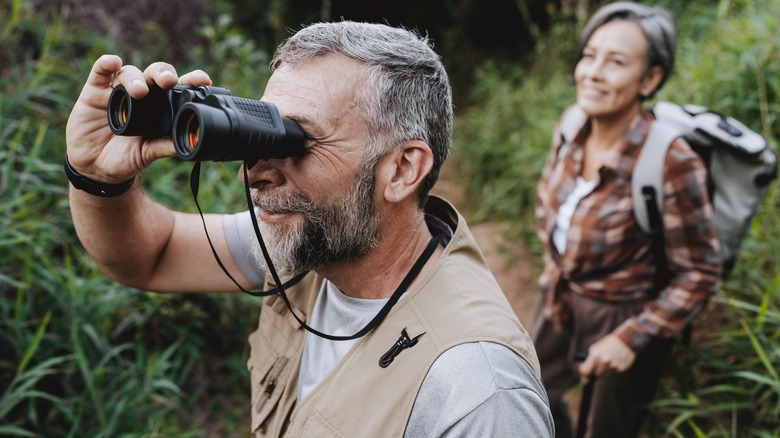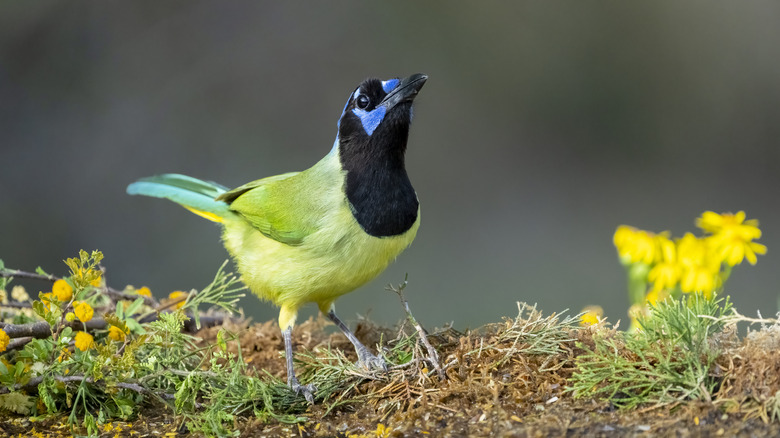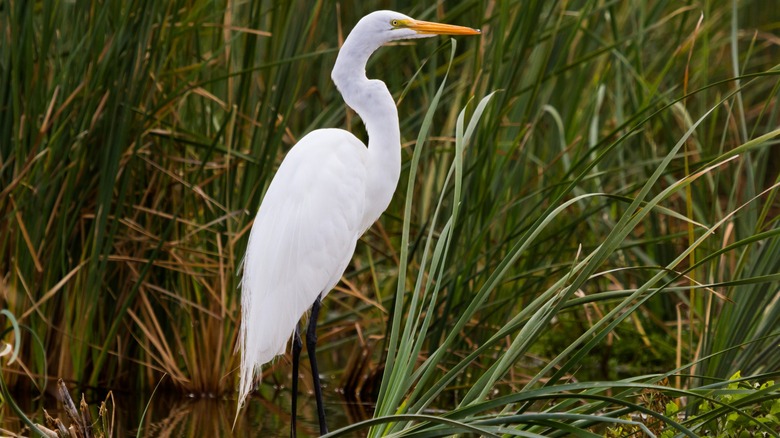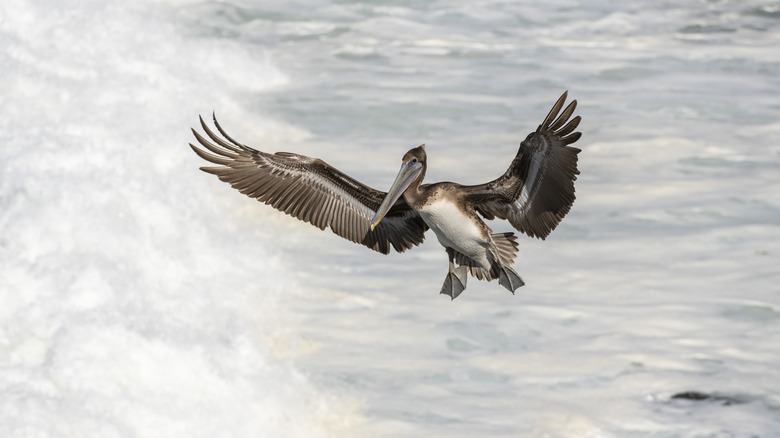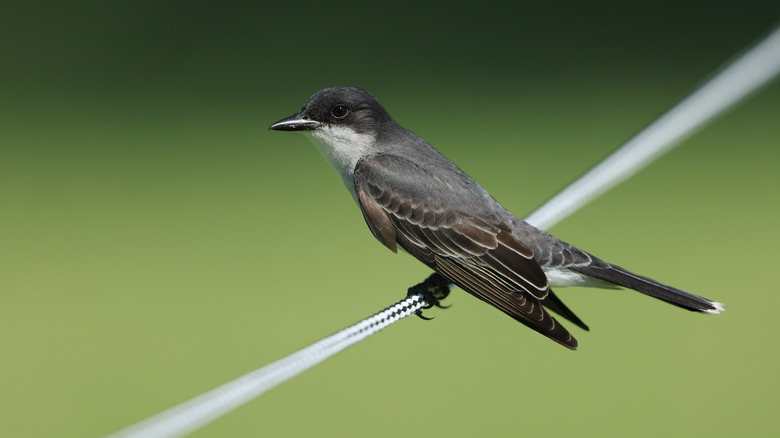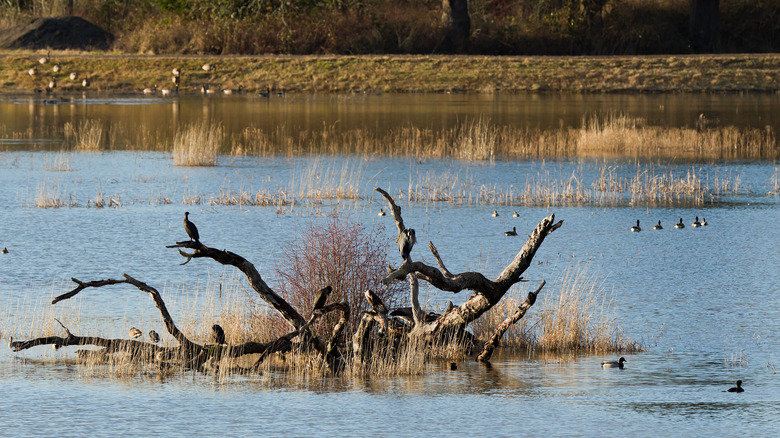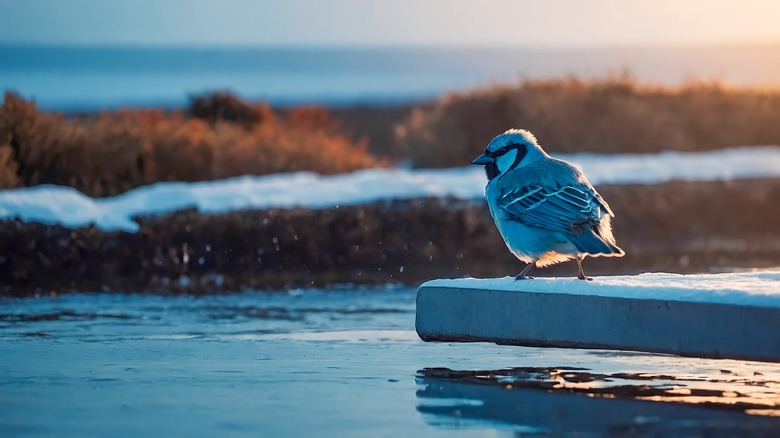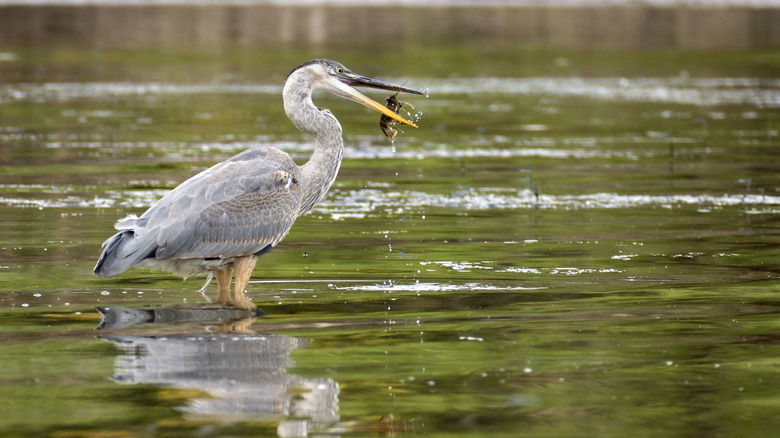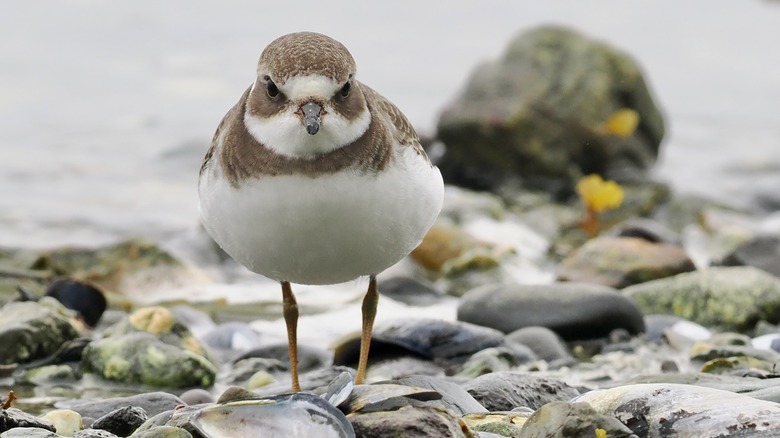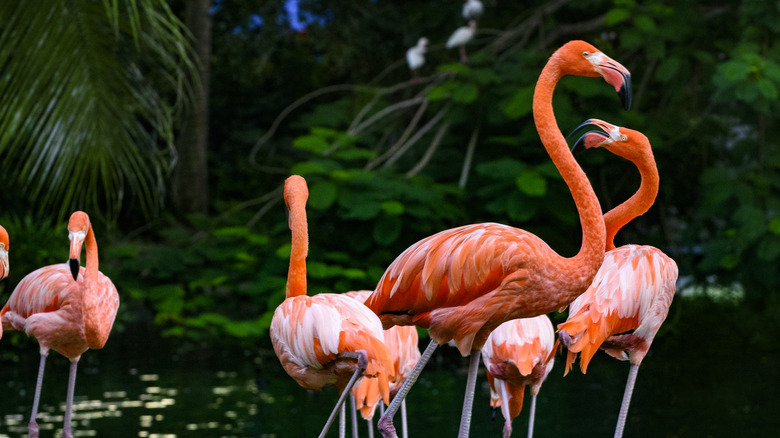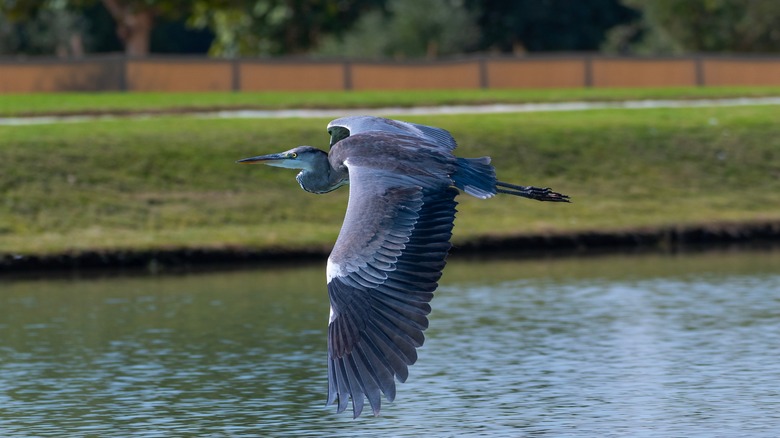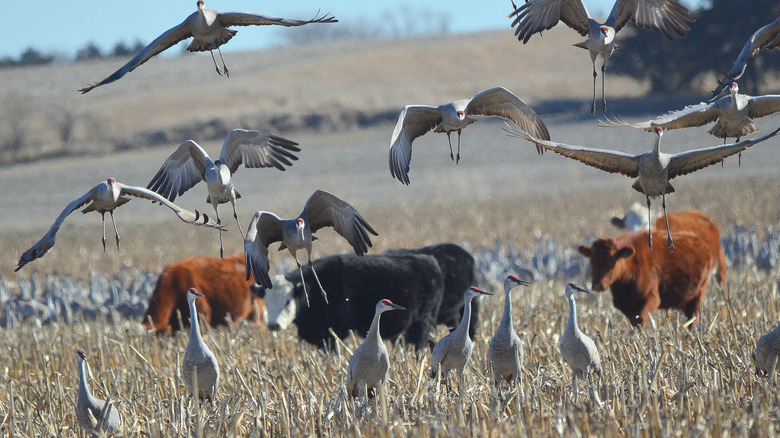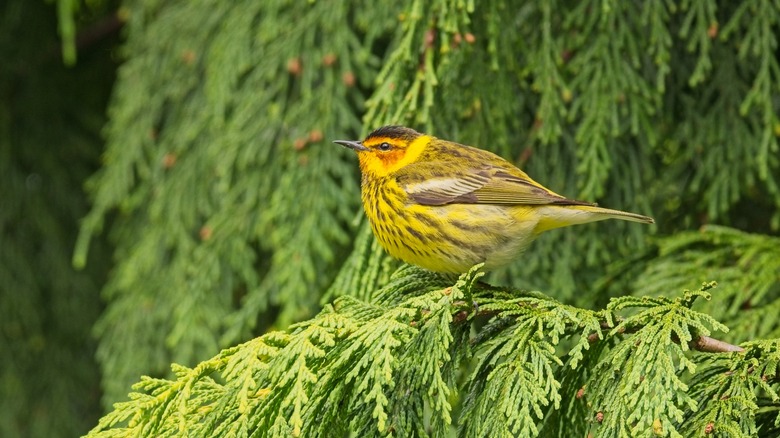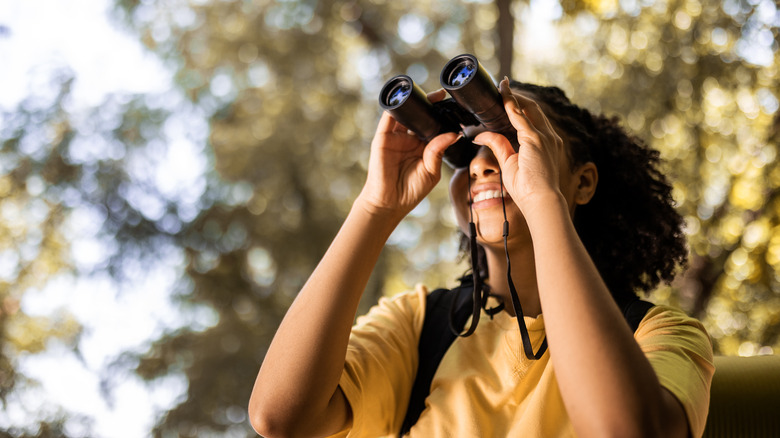The Best Birdwatching Destinations The US Has To Offer, According To Reddit
Whether you're new to the joys of birding or you've been watching birds for ages, communing with America's fine feathery friends is a fabulous way to experience the nation's eight diverse ecosystems. Using sites like ebird.org or the National Audubon Society, you can easily learn about the birds worth watching in each destination ahead of your trip. A real-world version of "Pokémon Go," birding is a challenge that gives you a chance to get out and explore nature everywhere you go. And with the help of the internet hivemind, it's easier than ever to find out where the true birdwatchers like to spend their time.
To get the inside scoop on the best birdwatching spots in the country, from little-known national parks perfect for family vacations to some of the country's best beach destinations, we spent some time in Reddit's birding communities to discover where seasoned birdwatchers like to vacation. Grab your binoculars and get ready to take a closer look at the best birdwatching destinations the United States has to offer.
Visit Sabal Palm Sanctuary in Brownsville, Texas, for green jays
Situated on the Gulf of Mexico, South Padre Island is usually thought of as a spring break or summertime beachgoing destination. But with tidal flats, coastal prairie, a hypersaline lagoon, and a complex dune system nearby, the area is teeming with wildlife. Just a 50-minute drive from South Padre in Brownsville, Texas, birdwatchers can find an aviary haven at Sabal Palm Sanctuary. Run by the Gorgas Science Foundation, Sabal features a 3-mile nature trail that runs through the Sabal Palm Forest down to the Rio Grande River and serves as a home to some of the region's most stunning avifauna.
It's also one of the rare spots in the United States where birders can catch a glimpse of the emerald-feathered green jay, a bird native to Central America, Mexico, and South Texas. Writing on r/birding, u/Clarizle reported, "I have seen green jays every time I've gone and they have a bird cam online if you want to check it out before you head out there." Near the sanctuary in Brownsville's Oliveira Park, a large parrot roost is home to the red-crowned parrot as well as several other species.
Catch a migratory bird fallout at these South Padre Island hot spots
Like its neighbor Brownsville, South Padre Island hosts hundreds of bird species. According to birding Reddit, the island is home to a regular migratory event popular among birdwatchers known as "migratory fallout." Unlike most birds' predictable annual migration patterns, bird fallout occurs when migratory birds disrupt their travel itinerary due to inclement weather patterns that bring high winds, rain, fog, or extreme heat or cold. These conditions force birds to descend for rest and food. Although a migration fallout can be difficult to predict, birders witness an outstanding, one-of-a-kind experience when they occur. To encounter one of these, watch for wind and weather changes during spring migration.
While that might seem like an awfully lot of work for a spur-of-the-moment birding vacation, the species you could potentially view are nothing short of awe-inspiring. "I am not talking about the hordes of black birds we see at HEB around sunset, we are talking about colorful red, blue, orange, and yellow birds in large numbers not seen in recent memory," u/cr0n1c reported on r/RioGrandeValley. "I went out there yesterday and it was pretty overwhelming and beautiful to say the least. I saw orioles, buntings, hummingbirds, grosbeaks, warblers, etc." One recent fallout saw birds flocking around hot spots like the South Padre Island Birding Center and the South Padre Island Valley Land Fund's protected acreage.
Experience a pelagic bird tour in San Diego
Pelagic birding is just a fancy way of describing birdwatching on a boat. If you love birding and you've never been on one, a pelagic birding tour should be high on your to-do list since there are plenty of feathered friends that are best viewed in their natural habitats on the water. A popular activity for bird lovers visiting the San Diego area, pelagic birding tours offer an opportunity to see a wide variety of species, including the Scripps's murrelet, black-footed albatross, ashy storm-petrel, brown booby and other rare boobies, black-vented shearwater, pomarine jaeger, and south polar skua.
Once you're done with your pelagic tour, the area is also home to plenty of shorebirds that are well worth the time to locate. "If you don't mind shorebirds, there's plenty of great spots along the coast," advised u/Francis_the_Goat on r/sandiego. "Tijuana River Estuary/Borderfield state Park and Famous Slough are great. Find some burrowing owls if they aren't on your life list yet! Famous Slough is another popular coastal birding sight." Other popular sites for birding in the San Diego area include the North San Diego County lagoons, Elfin Forest, and Lake Hodges.
See a wide range of plains birds in Oklahoma's Green Country
Located in Northeast Oklahoma, the area known as Green Country bordering on the Ozark Mountains is as lush and vibrant as the name sounds — it's the perfect place for birders to catch a wide variety of plains birds. According to Reddit's birding community, the region is full of great spots to check out the local avian population. Writing on r/birding, u/tjroberts79 shared a list of Green Country birding destinations. For a few good birding spots located within reasonable driving distance, the Redditor recommended checking out the Deep Fork National Wildlife Refuge, Greenleaf State Park, and the J.T. Nickel Family Nature and Wildlife Preserve. Specifically referencing Deep Fork, the Redditor reported seeing ducks, woodpeckers, warblers, grosbeaks, vireos, turkeys, painted buntings, and yellowthroats in the area.
If you feel like heading a little further west, about two hours away, you can find the Salt Plains National Wildlife Refuge. "We have seen whooping cranes and really impressive geese migrations at the Salt Plains NWR the last few Octobers," u/tjroberts79 wrote. "The morning Sandhill flights seen from the lake trail overlook and blind during migration (mid-October to November) there is something few people go to see, but maybe the most amazing nature sight in Oklahoma."
Visit Oregon's Tualatin River Wildlife Refuge for a host of floodplains birds
Thanks to seasonal flooding, the flattened land surrounding a river can provide a fertile home for a wide range of avifauna and other wildlife. One of the best places to find floodplains bird in the Pacific Northwest is near Oregon's Tualatin River. A tributary of the Willamette River, which in turn courses into the Columbia River, the Tualatin River is a lazy, meandering watershed that flows mainly through flat land, creating a lush, vibrant habitat for many species. Here, birders can commune with red-tailed hawks, bald eagles, greater white-fronted geese, lesser scaups, short-eared owls, and even the great blue heron — just for starters. The refuge is even home to a solo black swan who took up residence there in 2023.
Writing on Tripadvisor, a user named Jillian F. raved, "Tons of birds! I went in early evening and walked the full loop around the refuge. It was peaceful, and I could hear birds chirping and singing along the entire trail." While others advised that the refuge is not the most idyllic due to its proximity to the road, most emphasized that the wildlife makes it worth the drive. Posting on r/askPortland, one Redditor shared, "Tualatin River [National Wildlife Refuge] should be in the top thread (most reliable place for black headed grosbeaks in my experience)."
Spend a week in Arizona's Madera Canyon and commune with woodpeckers
One of the most raved-about birding spots in the southwest, at least according to Reddit, is Madera Canyon. Just a short drive from Tucson, Madera Canyon is a lush, wooded ravine full of excellent shady trails where more than 250 species of birds can be spotted. Loads of hummingbirds can be seen here, especially during the summer months. Other birds you could potentially bump into in Madera Canyon include elf owls, red-faced warblers, and elegant trogons with their vibrant red chests.
Writing on r/birding, u/omnivoroustoad reported spying a fair number of Mexican jays in the canyon: "Highlights for me were the Northern Cardinal, Pyrrhuloxia, yellow eyed juncos, Mexican jays, and oh gosh all of the wood peckers!" Another Redditor replied, "Madera Canyon is a must-visit! Spring and summer are best times to catch a glimpse of elegant trogons. My wife and I have even seen one as late as December!" The preserve even has an ADA-accessible nature trail so that bird lovers with mobility needs can get in on the fun.
Experience a wide range of bird species in Colorado's varied climates
If you're looking for an opportunity to experience avifauna in diverse habitats within a reasonable driving distance, Redditors on r/birding say you can't beat Colorado. As u/SquirrelSanctuary puts it, "Nearly every hotspot has like 4 biomes within walking distance." More than 400 species of birds live in Colorado, thanks to a landscape that features prairie grasslands, semi-desert and mountainous shrublands, mountain and subalpine forests, alpine tundra, and pinyon-juniper woodland. Yellow warblers, yellow-headed blackbirds, western meadowlarks, vibrant Steller's Jays, charming mountain bluebirds, and even the wild-looking greater prairie-chickens are among the many bird species that take up residence here.
To promote birding tourism, Colorado even has the Colorado Birding Trail. This is a statewide initiative that connects public parks and open land with privately owned spaces to create an extensive network of birding and nature trails. If you're not sure where to begin, start with the Rocky Mountain Arsenal Wildlife Refuge or Rocky Mountain National Park (aka the hidden gem national park for outdoor adventures), which is less than two hours away. As u/nosa290 advised on r/birdwatching, "RMNP is great for off-season or on weekdays but otherwise there are much less crowded places with more birds available. Taking a drive to Dillon Reservoir is one of my favorites to watch birds from kayak or by walking the perimeter trail. Lots of bald eagles, ospreys and waterfowl."
Hang out with eagles and ospreys in Bar Harbor, Maine
If you're in the market for birding in New England, head to Maine's Bar Harbor with its coastal habitat, glacier-formed lakes, deep deciduous and boreal forest, valleys, mudflats, wetlands, and beaches. Located on the 108-square mile Mount Desert Island (pronounced "dessert"), the picturesque New England island encompasses Acadia National Park and is host to at least 338 species of birds. The region's forested lands are home to a range of woodpeckers and songbirds, including vireos, thrushes, chickadees, and warblers. Plenty of shorebirds and waterfowl can also be found here — think loons, sandpipers, gulls, plovers, and freshwater duck species. Perhaps most spectacular are the members of Bar Harbor's bird-of-prey population, including vultures, osprey, falcons, eagles, hawks, and owls like barred and snowy owls.
To get the best of what land and sea have to offer, head down the trails through postcard-worthy Acadia National Park one day and spend the next on a pelagic tour to commune with the local puffin population. Reporting on one of the puffin and lighthouse tours, Lisa Hagen wrote on Tripadvisor, "We saw Harbor Seals, Arctic Terns, Atlantic Puffins, Razorbills, Common Murres, Grey Seals, Bald Eagles, [and] Wilson's Petrels."
The Everglades is a haven for flamingo watchers
Called the "River of Grass" by Journalist and Conservationist Marjory Stoneman Douglas, the Everglades is a 50-mile wide subtropical marsh region and natural estuary bordering the mangrove swamps adjacent to the Gulf of Mexico, Big Cypress Swamp, and Florida Bay. Here, the saltwater of the ocean combines with the Kissimmee River's freshwater in a hauntingly beautiful stretch of protected wetland.
More than 200 species of birds can be found here, including plenty of waterfowl, diving birds, and wading birds. Endangered wood storks, egrets, herons, limpkins, cormorants, vireos, warblers, and woodpeckers are all among the region's local residents. But many birders are drawn to the Everglades for its flamingo population — not to be confused with its equally pink roseate spoonbills. And while you're there, there's a strong chance you'll get to see an amazing and rare sight — The Everglades is the only place in the world to see wild alligators and crocodiles in one spot.
With such a massive footprint, there are plenty of hot spots for birders to choose from, and you really can't go wrong no matter where you start. On r/birding, Redditor u/keepp advised kicking off a birding tour in the Everglades National Park's self-guiding Anhinga Trail. "The ecosystem goes from being freshwater to saltwater as you go south and so the species of birds changes as you get down to Florida Bay," they wrote. Just be sure to bring plenty of sunscreen, water, and insect repellant when you go.
Watch for blue herons around the Great Lakes region
Formed around 20,000 years ago at the end of the last ice age when a mile-thick sheet of ice carved out the earth as it melted, the Great Lakes region is one of North America's most magnificent sights to behold. Surrounding the lakes are a number of habitats, from dune ecosystems to forests and wetlands — which means many spectacular spots to check out the Great Lakes' avifauna, particularly the ones that live on fish and algae.
With a U.S. side that stretches through Wisconsin, Pennsylvania, New York, Ohio, Michigan, Illinois, and Indiana, there is no shortage of birding hotspots in the Great Lakes region. Stop by the Chicago Riverwalk, and you'll find rock pigeons, gulls, robins, starlings, sparrows, and even the occasional peregrine falcon, indigo bunting, black-crowned night heron, and white-winged scoter. "Chicago area is very diverse," A Redditor wrote on r/chicago. "Both due to migratory routes as well as the fact that we're pretty much smack dab in the middle of everything with access to a huge body of fresh water." Another favorite birding hot spot in the Great Lakes region is the Detroit River International Wildlife Refuge, where blue herons have been known to hang out.
Be mesmerized by sandhill cranes in Nebraska
Once wrongly considered to be part of the American desert, the Cornhusker State is actually a land of vast ecological diversity. The state's many wetlands include forested swamps, marshes, and wet meadows, creating an inviting space for many waterfowl. Additionally, its expansive grasslands and prairies serve as a habitat for many prairie bird species. Then there are its vibrant woodlands.
Situated among Nebraska's western prairies are a 34,000-mile expanse of sandhill dune fields — the avian Airbnb for around 650,000 cranes on their annual migratory path from their winter homes down south in Mexico, New Mexico, Texas, Arizona, and California to their summer breeding grounds up north. The annual migration brings the sandhill cranes through Nebraska's Platte River region each year from mid to late February through mid-April when the birds settle temporarily in Nebraska to fatten up on corn before heading north.
Those who get to see the birds say it's one of the most breathtaking sights they'll ever behold. Reporting his own sunset viewing experience on the Platte River, Denis Svechkarev of the blog K8UA recalled that the magic started 10 to 15 minutes before sunset when thousands of birds search for a resting spot along the river, inadvertently putting on a breathtaking show.
Witness warblers around Cape May, New Jersey
Part of the 95-mile-long Atlantic coast lagoon system, the Cape May Peninsula area of New Jersey includes shallow protected bays, salt marsh islands, inlets, marshes, back-barrier lagoons, forests, and hardwood swamps. At least 151 avian species make their residence here thanks to the area's extensive natural resources, which provide many welcoming natural habitats for waterfowl, raptors, songbirds, and shorebirds. The area is also an important stopping point for many land bird species' annual spring and fall migrations.
For warblers, a Redditor suggests on r/birding a visit to Higbee Beach, adding that the South Cape May Meadows and Rea Farm area are good spots for clapper rails and red knots. Adding to the initial recommendation, u/melanerpes wrote, "Higbee Beach for songbirds, and go early in the morning. The Meadows is a good place as well, for rail, least tern, and piping plover." They went on to add that a pelagic tour in the area yielded a fair number of oystercatchers, purple sandpipers, and night heron sightings. And if you're not having any luck in Cape May, unlikely as that may be, a one-hour drive to Brigantine should bring you plenty of shorebird sightings. As one Redditor reported, "You're going to see some great shorebirds there, skimmers, soras, dunlins, willets, and maybe even a blue grosbeak."
How we chose our birding spots
The United States boasts an embarrassment of riches when it comes to natural beauty, and that means lots of breathtaking habitats to commune with nature. To find out which of these habitats offer some of the country's best birdwatching, we started with r/birding and other Reddit birding communities to see which recommendations were a birder's favorite. Armed with that information, we then scoured Reddit and Tripadvisor for those destinations, using keyword terms like "birding" to learn as much as possible about each spot. We wrapped up our research by searching for the birds you can find at each location.
